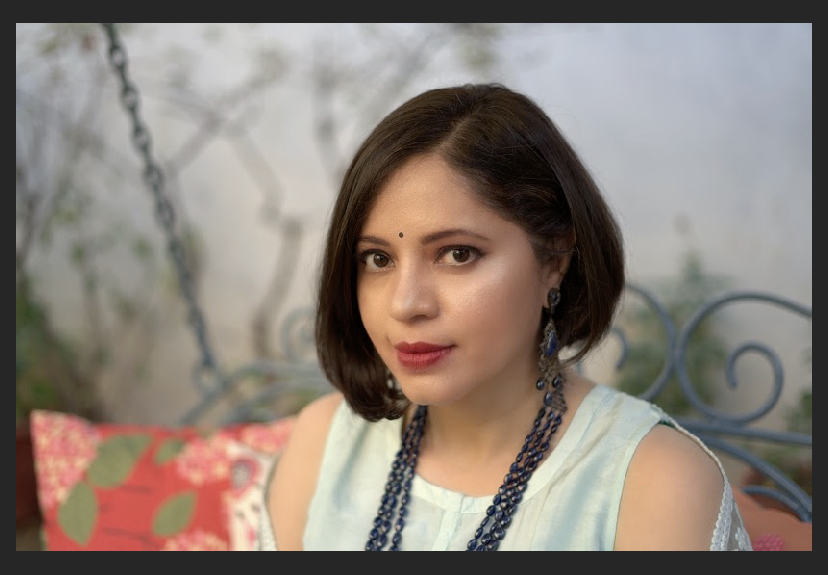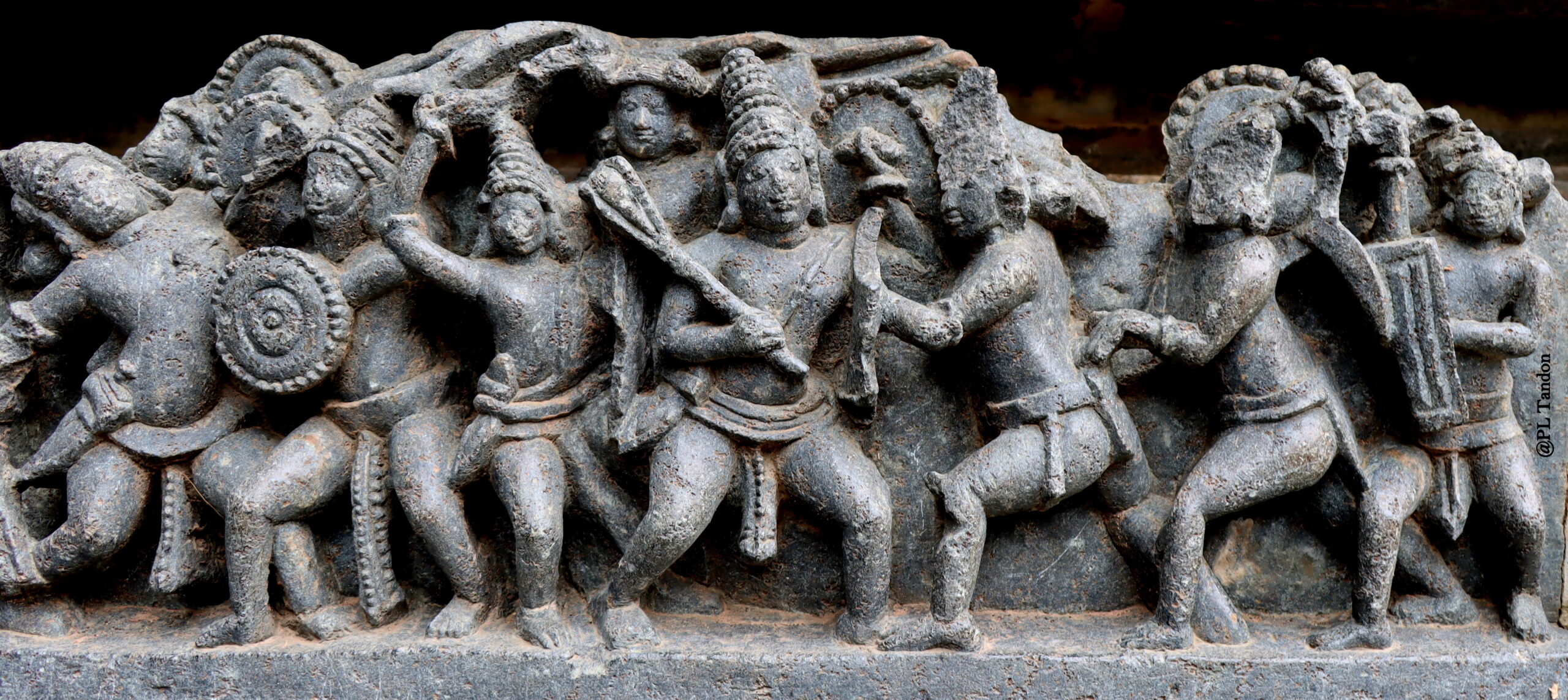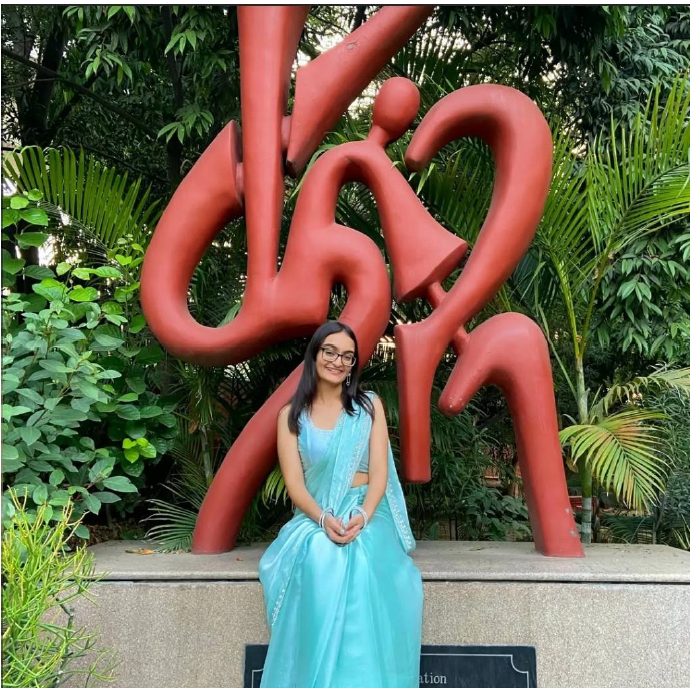Hindu history is not just a history of time and events; it is a documentation of heroes and the battles they have fought. Whether it is the Rig Veda, which documents the Battle of the Ten Kings (दाशराज्ञ युद्ध), the Ramayana, which documents the battle between Prabhu Rama and Ravana, or the Mahabharata, which documents the mega war between Pandava and Kaurava brothers: all contain battle strategies and the stories of the warriors.
The Vedas, the oldest scriptures of Hindus, are filled with hymns extolling the virtues of gods and warriors. Men are asked to be gods like Indra and strike their enemies. Rama and Krishna, celebrated for their divine qualities and heroic deeds, are central figures of Hindu culture. In this manner, Hindus not only kept their stories alive for future generations to learn from, but also honored their brave, unlike any other culture.
From the ancient to the current era, the legacy of celebrating the brave continues in India.
Ancient Era

We can say with pride that the Hindu tradition of honoring heroes is as old as our civilization itself because even the oldest excavated remains from 4000 years ago in Sinauli, western Uttar Pradesh, have unearthed a royal burial complete with the heroes’ artifacts. It contained a coffin with copper legs, a king’s headgear, three full-sized chariots made of wood and copper, and a sword with a wooden hilt.
All the artifacts have a high degree of sophistication and reveal excellent craftsmanship. These archaeological remains suggest that its inhabitants held their warriors in high esteem. Artifacts and inscriptions point towards the practice of commemorating the deeds of prominent warriors, which indicates, beyond doubt, a formalized form of hero worship.
The Roots of Heroism
For Hindus, hero worship is not only found in graves and books but is ingrained in daily life. Being brave is the mark of a man. Hindu men of valor and courage often adopt surnames such as Singh, which means “lion” in Sanskrit, and historically, Hindu kings would sit on thrones supported by four lions, known as Singhaasana (the seat of the lion).
To those unfamiliar with Hindu customs, the prevalence of ballads celebrating bravery, numerous individuals with the surname Singh, and the high regard for valor may seem puzzling. The roots of this tradition are found in the fundamental qualities expected of men, as described in Ananga Ranga. Ananga Ranga is one of the books of Kama Shastra and describes the characteristics of men and women. Chapter VII states, “The first characteristic of a man is courage, with endurance; if he attempts any deed, great or small, he should do it with the spirit of a lion.”
Understanding this principle helps us appreciate the value of bravery in Hindu culture.
Medieval Era
During medieval times, heroes were honored in ways that were grander than ever before. Their honor took marvelous architectural dimensions, where not only the hero but the beloved deity of the hero or the deity of his clan started being worshiped. Temples and monuments were constructed to commemorate kings. Numerous dynasties built their temples to serve as places of worship and storehouses for heroic narratives. These temples contained inscriptions and sculptures that celebrated the deeds of their kings. In this manner, not only oral but actual Hindu history has started being etched in stone, ensuring their legacy is passed on to future generations.
A prime example of such architecture is the 12th-century Hindu temple of Bucheshwara in Koravangala, Karnataka. It is a striking example of Hoysala architecture and was built by a wealthy patron called Buchi Raja. Its inscription states that it celebrates the coronation of the Hoysala King Veera Ballala II.
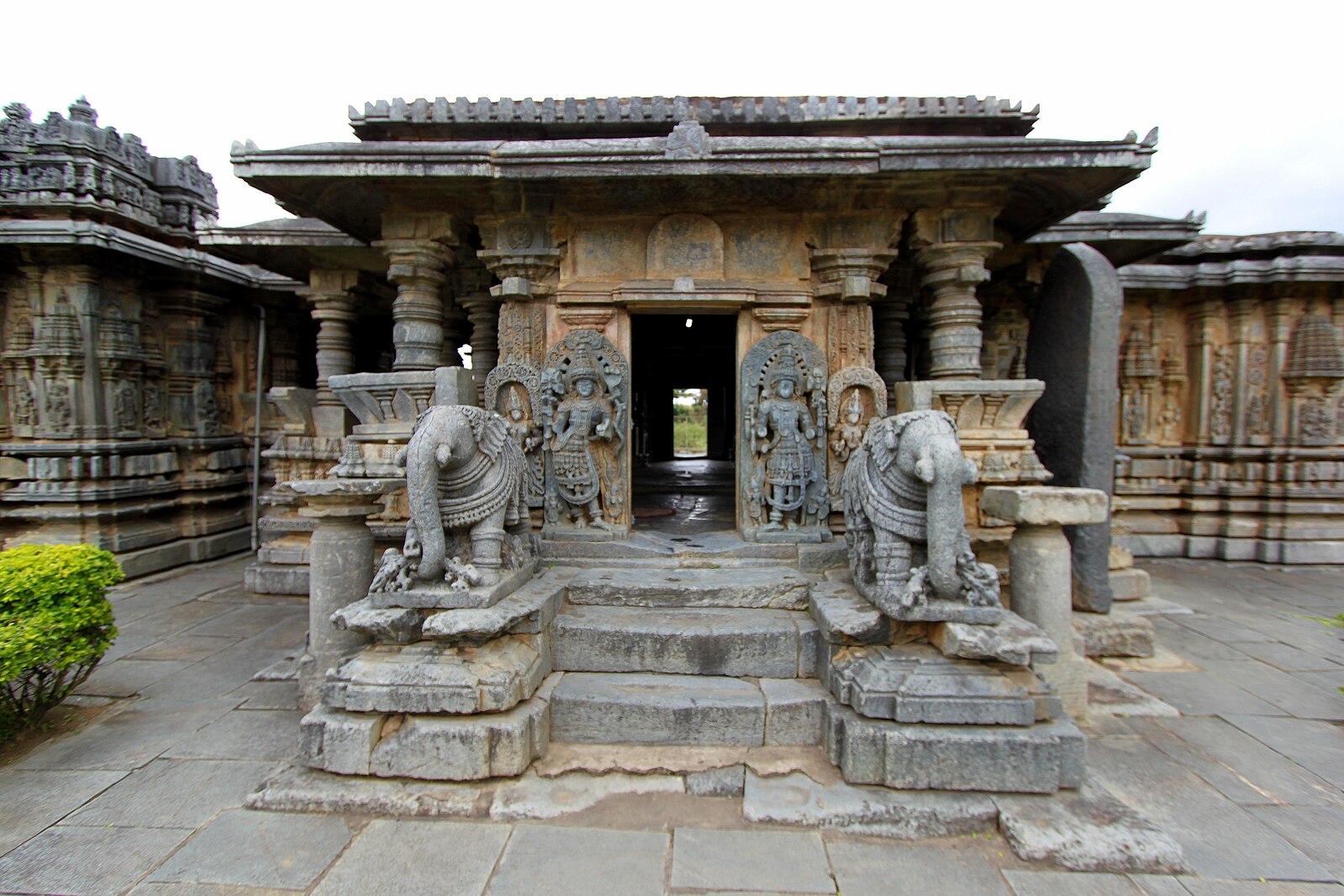
At this point, the majority of the documentation is about kings, and therefore, a few might be tempted to think—were only the kings celebrated as brave men? What about the poor yet brave men from the village? Who would document them?

This 600-year-old slab shows a carving to honor a hero who saved people from wild beasts. Known as ‘Pulikkuthi pattan kal’, it was found at a mango garden in a village, 15 km from Tirupattur. Tirupattur is one of the oldest inhabited places in Tamil Nadu, with a history spanning over 1600 years. It is also known as Sandalwood City.
The 4½ feet wide and 4 feet in height slab depicts a valiant warrior fighting a tiger. The hero holds a dagger with an ‘H’-shaped handle known as a ‘Kattari’, which is native to the Indian subcontinent. In the past, warriors who were well-versed in using this weapon were honored by the surname “Katar.”
Slabs such as these are meant to honor warriors who sacrificed their lives to save villagers from large predators. Villagers consider such warriors as gods and pay homage to the brave souls who safeguarded their land from beasts.
Current Era
Subhash Chandra Bose, one of the most intelligent and daring freedom fighters of the nation, would have turned 125 years old on 23 January, 2022. To honor this brave son of the soil, instrumental in getting us our independence, Prime Minister Narendra Modi unveiled Netaji’s statue at India Gate during the inauguration of Kartavya Path on September 08, 2022.
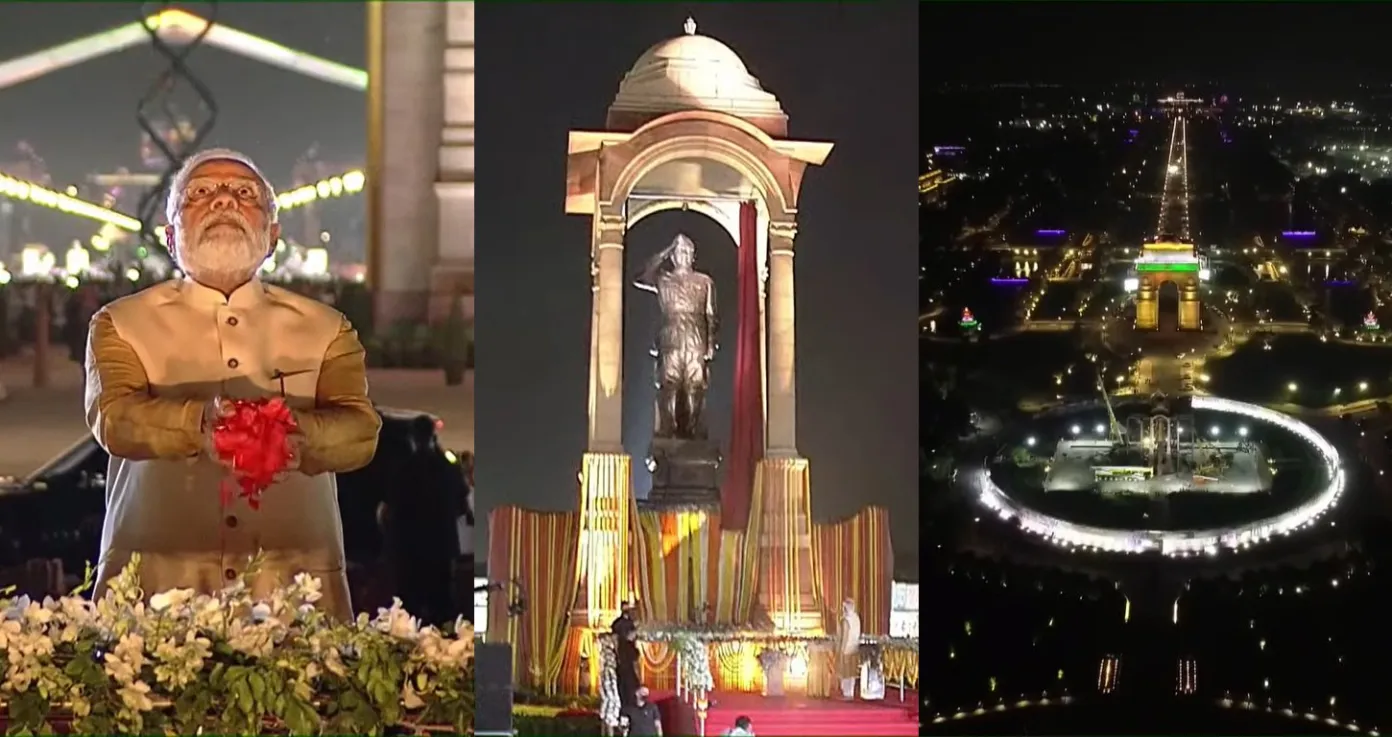
Netaji’s statue was sculpted by the famous Arun Yogiraj, the Mysuru-based sculptor who is also famous for sculpting the Ram Lalla Vigrah at Ram Mandir, Ayodhya.
In the current times, Prime Minister Modi has been a prominent figure who has continued the tradition of honoring heroes. Under his leadership, heroes have been honored in numerous ways both in and outside the country.
Previously, in December 2018, as a tribute to Netaji and to honor his memory, Ross Island was renamed Netaji Subhas Chandra Bose Island. Neil Island and Havelock Island were also renamed Shaheed Dweep and Swaraj Dweep. This was done by Prime Minister Modi, considering the historic significance of the Andaman and Nicobar Islands.
Recently, on a visit to France, he honored the memory of Veer Savarkar, another valiant freedom fighter instrumental in the freedom movement. He also paid homage to the fallen Indian soldiers.

On 19th February 2025, Prime Minister Narendra Modi paid homage to the valiant King Chhatrapati Shivaji Maharaj. It was Shivaji Maharaj’s 395th birth anniversary. Shivaji Maharaj is a famous warrior who proclaimed ‘Hindavi Swarajya’ and established the Maratha Empire.
On X, Home Minister Amit Shah praised Chhatrapati Shivaji Maharaj as a protector of the flag of Sanatan self-respect and a nation builder for his lifelong fight against fundamentalist invaders.

On 25th February 2019, the National War Memorial in New Delhi was inaugurated by the Prime Minister to memorialize the supreme sacrifice made by soldiers in the line of duty. The memorial complex is in harmony with the Central Vista and the majestic Rajpath and has four distinct circles explained in the image. The memorial honors 26,000 fallen soldiers and is a symbol of victory and national pride for citizens. It is a befitting tribute to our armed forces, and a symbol of gratitude towards them for keeping us safe.

From the early days of the ancient Harappan Civilization to the contemporary times of Prime Minister Narendra Modi, this tradition of honoring heroes has evolved but remained steadfast in its core values of respect, remembrance, and reverence. The temples and monuments erected in their honor, the graves that contain their chariots, and the stories of their valor serve as a reminder of their contribution and sacrifice. These are the men who have shaped the course of our past, and their stories will continue to inspire us and shape our future.
Long live their legacy, and may we forever honor and worship our heroes.
Jai Hind.
The views and opinions expressed here belong solely to the author and do not reflect the views of BlueKraft Digital Foundation.


